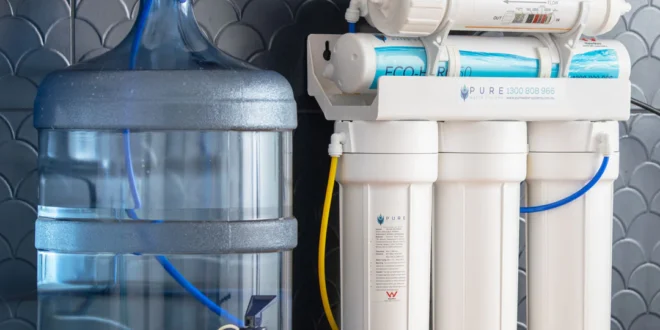When you reach for a glass of water, you might be considering its purity, taste, and even its health benefits or implications. Reverse osmosis (RO) water often comes to mind when thinking about clean drinking water.
It’s a common water purification method that removes contaminants and impurities through a semi-permeable membrane. The technology has gained favor for its effectiveness in providing water that is free from a wide range of pollutants.
Yet, the subject of whether reverse osmosis water is good for you extends beyond the technology’s ability to purify. There are concerns about the removal of beneficial minerals, the quality of the water post-treatment, and whether such processed water meets all your health needs.
The best tankless reverse osmosis systems excel in producing safe drinking water by stripping harmful contaminants, the debate on its impact on health continues in the light of potentially lower mineral contents and the necessity of regular system maintenance for consistent water quality.
The Basics of Reverse Osmosis Filtration
Reverse osmosis (RO) is more than just a filter—it’s a comprehensive filtration system that removes a wide range of contaminants from water, including dissolved salts, bacteria, and other harmful particles. At the heart of this system is the semi-permeable membrane, which is selectively permeable to water while blocking larger molecules.
As water passes through this membrane under pressure, impurities are left behind, giving you clean, purified water.
The filtration process typically works in multiple stages. Initially, water passes through pre-filters, including a carbon filter that removes chlorine and other materials that could damage the delicate RO membrane. Only after this pre-treatment does the water encounter the RO membrane.
Key Components of a Reverse Osmosis System
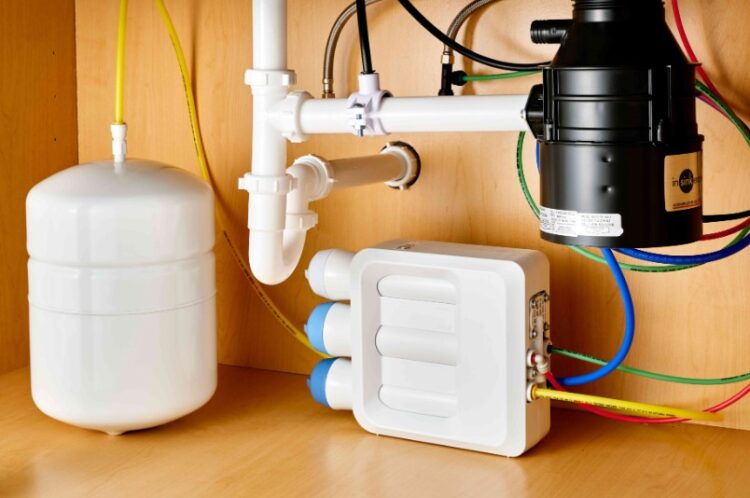
A standard reverse osmosis system includes several key components:
- Pre-filtration ─ Before reaching the RO membrane, water is pre-treated to remove sediment and chlorine.
- RO membrane ─ This is the central component of the system. The RO membrane’s tiny pores allow only water to pass through, leaving contaminants behind.
- Storage tank ─ Purified water is stored in a tank until you’re ready to use it.
- Post-filtration ─ Water passes through an additional post-filter before it reaches your faucet to polish the taste.
By understanding these components and how they work together, you can ensure your RO system functions effectively, providing you with safe and clean water.
Health Implications of RO Water
When considering the health implications of reverse osmosis (RO) water, it’s important to examine the presence of minerals and how it compares to tap and bottled water options.
The Debate Over Minerals in Water
RO water is often considered demineralized, as the process removes not only contaminants but also beneficial minerals like calcium and magnesium that your body needs. The World Health Organization has expressed some concerns about the low mineral content in RO water, suggesting that the absence of these minerals could potentially affect your health negatively, especially if your diet is not supplementing these essential nutrients.
Comparing RO Water to Tap and Bottled Water
Tap water, depending on your location, generally contains a mix of minerals which can be beneficial to your health. Bottled water varies widely in mineral content, with some resembling tap water and others being more similar to RO water if they too are processed by reverse osmosis.
When comparing RO water to tap and bottled water, the main difference lies in the mineral content and the potential for the presence of contaminants. RO water is praised for its ability to desalinate and remove impurities, but it’s worth considering the mineral content you may be missing out on, which contributes to the recommended daily intake of essential nutrients.
Contaminants and Purity Levels
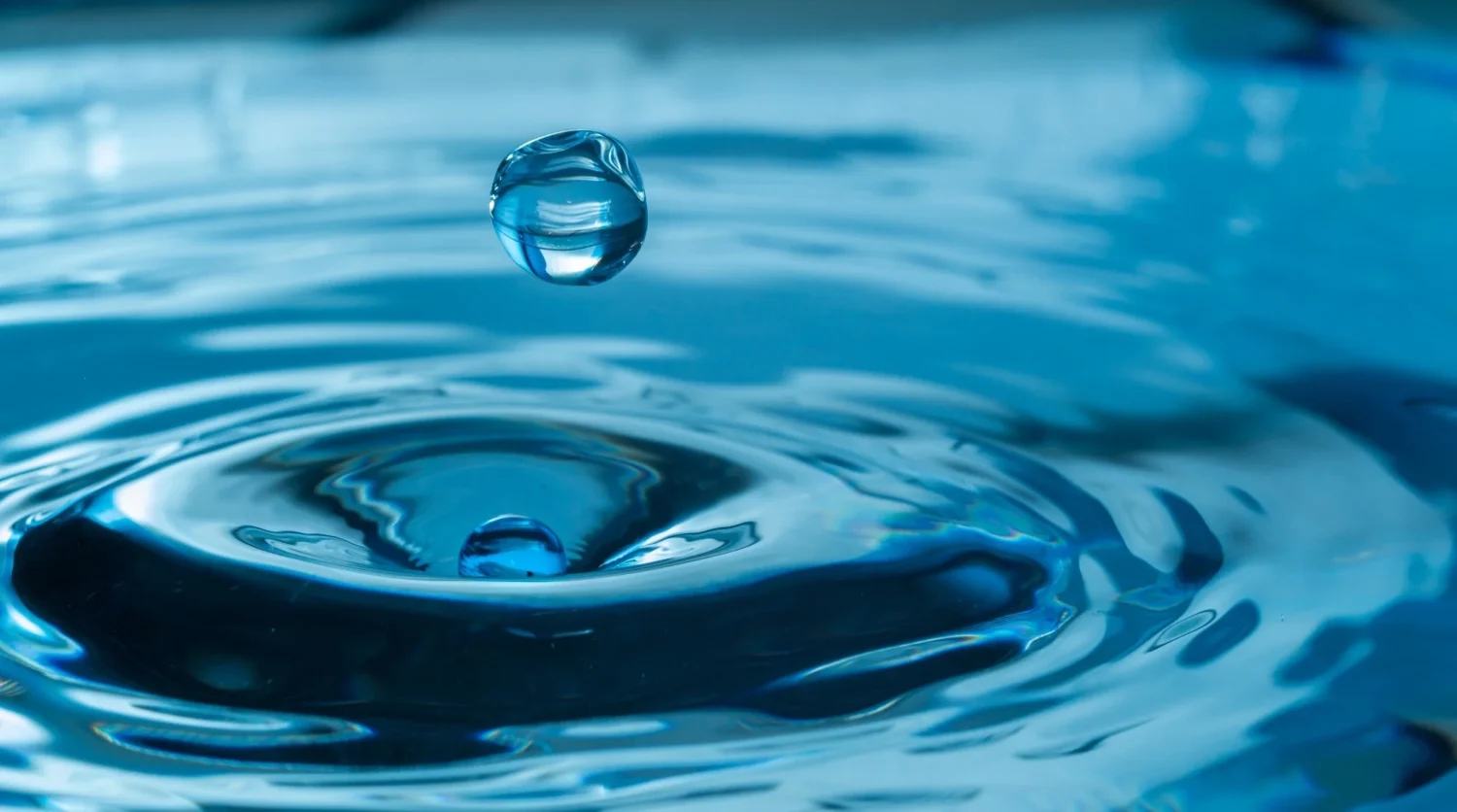
In your quest for cleaner water, understanding the specific impurities that reverse osmosis (RO) can eliminate is crucial for your peace of mind. RO systems are highly effective at removing a variety of contaminants that may affect water quality and safety.
Types of Contaminants Removed by RO
RO systems are engineered to filter out a wide array of contaminants that commonly infiltrate water supplies. Here’s a more detailed look at the impurities RO technology targets:
- Chemicals ─ Pesticides and volatile organic compounds (VOCs) that seep into water sources.
- Heavy metals ─ Dangerous elements like lead, arsenic, and fluoride which can pose health risks.
- TDS (Total Dissolved Solids) ─ High levels of TDS can include minerals, salts, or metals dissolved in water.
The purification process is designed to significantly reduce these substances to levels that are generally considered safe for consumption. For instance, properly configured RO systems can remove more than 95% of toxins, turning contaminated water into clean, potable water.
Water Quality and Safety Standards
When it comes to the quality and safety of RO water, there are set standards you should be aware of:
- World Health Organization (WHO) Guidelines ─ These are international references for drinking water quality, suggesting limits for various contaminants including arsenic, fluoride, lead, and chlorine.
- Local safety standards ─ Your local regulations may have specific requirements for allowable levels of impurities in drinking water.
Regular testing of your RO system’s performance is important to ensure the water quality remains within safe consumption limits. Monitoring will help you to confirm that your system efficiently removes a high percentage of contaminants and that the water you drink meets or surpasses both WHO guidelines and local safety standards.
Practical Considerations and Maintenance
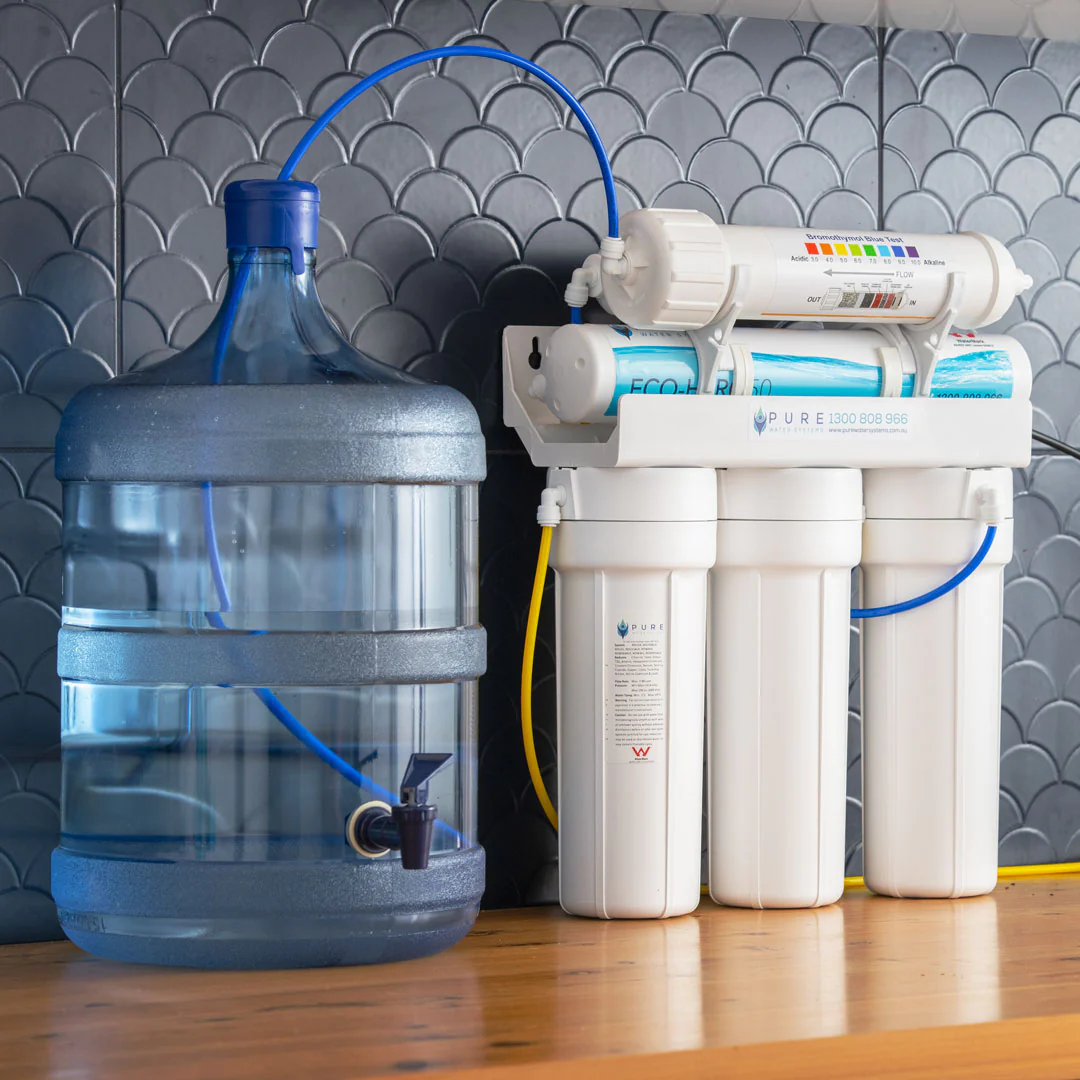
When you’re considering a reverse osmosis (RO) system for your water purification needs, it’s essential to understand not just the benefits but also the practical aspects such as cost and the required maintenance.
A well-maintained system ensures a consistent supply of purified water, but there are factors like installation expenses and ongoing upkeep to consider.
Cost and Installation Factors
Installing a RO system involves upfront costs for the unit and potentially additional professional maintenance fees if you’re not undertaking the installation yourself.
The initial investment can range from a few hundred to a couple of thousand dollars, depending on system size and complexity. It’s crucial to ensure that your home has adequate water pressure, as RO systems require a certain level to function properly, which might necessitate a booster pump.
Typical RO system installation costs:
- Basic under-sink models ─ $150-$600
- Whole-house systems ─ $1,000-$2,800
- Booster pump (if needed) ─ $200-$500
Routine Maintenance and Filter Replacements
Your RO system will need regular maintenance to keep it running smoothly. This includes changing the sediment pre-filter and carbon filters which protect the system from large particles and chlorine, respectively. Filter changes are typically recommended every 6-12 months, but this frequency can vary based on your water usage and the quality of your feed water.
A critical part of maintenance is the periodic replacement of the RO
membrane, which is the heart of the system. Expect to replace this every 2-4 years.
Be mindful that RO systems do produce some waste water, but newer models have become more efficient. Finally, the storage tank that holds your clean water should be sanitized annually to prevent bacterial growth.
Maintenance Schedule:
- Sediment pre-filter ─ Replace every 6-12 months
- Carbon filters ─ Replace every 6-12 months
- RO membrane ─ Replace every 2-4 years
- Storage tank ─ Sanitize yearly
Regular upkeep will help prevent costly repairs and ensure your system provides quality drinking water for years to come.
Environmental Impact and Sustainability

When you consider reverse osmosis (RO) water, the environmental impact and sustainability should be on your radar. Reverse osmosis offers a method to purify water, but what does it mean for the environment?
Firstly, let’s talk about waste water. RO systems tend to produce a considerable amount of waste water compared to purified water. For every gallon of drinkable water, multiple gallons of brackish or saline water are often discharged. This can be a concern in areas with limited water resources.
However, utilizing brackish groundwater rather than seawater can alleviate some of these impacts, resulting in a more sustainable process. The process is noted to have reduced environmental impacts when brackish sources are used.
Looking at bottled water, the conversation shifts gears.
The production and disposal of plastic water bottles is notorious for its ecological footprint. Plastic bottles can take hundreds of years to decompose, and their manufacturing consumes valuable resources and energy. In contrast, RO systems in homes and businesses cut down on plastic waste, making them a more sustainable option for water consumption.
From a sustainability angle, RO systems can offer long-term water filtration solutions. However, they must be managed properly to minimize their energy use and manage the wastewater generated.
In the battle against water scarcity and the quest for sustainable potable water, environmental considerations of desalination processes are crucial. The key is to balance your need for clean water with responsible environmental practices, ensuring that we tread lightly on the planet while quenching our thirst.
Frequently Asked Questions
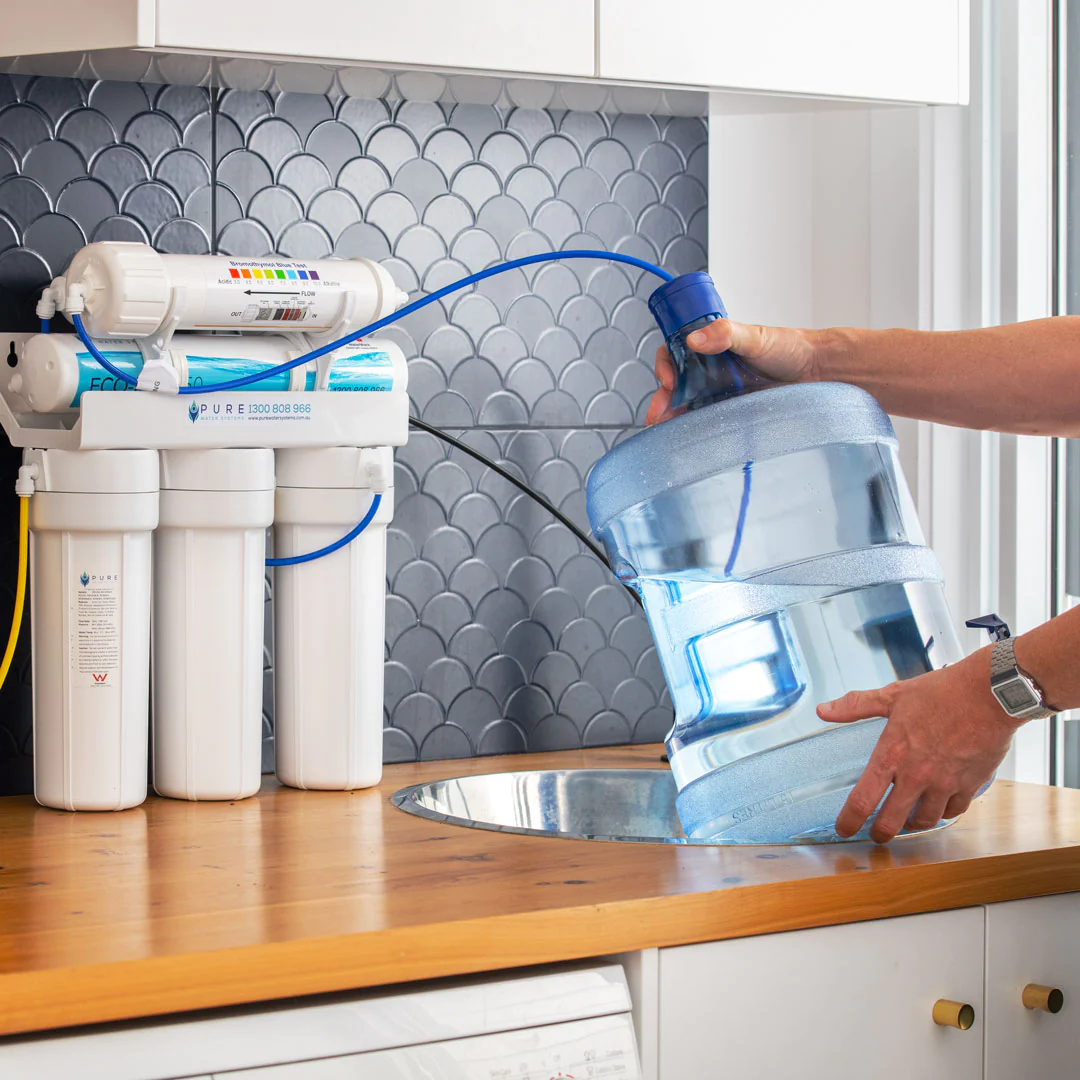
What are the potential health implications of drinking reverse osmosis water regularly?
Reverse osmosis water is devoid of minerals, leading to concerns about its impact on mineral intake if consumed as the primary water source. Long-term reliance on this demineralized water may necessitate additional mineral supplementation.
Can drinking water from a reverse osmosis system lead to any negative kidney health effects?
While reverse osmosis water is safe for kidney function, the lack of minerals may mean it doesn’t contribute to the body’s electrolyte balance as well as mineral-rich water would. Adequate dietary intake of minerals remains important to maintain kidney health.
How does reverse osmosis water compare with distilled water in terms of health benefits?
Both reverse osmosis and distilled water are free from contaminants but lack minerals. Health benefits typically associated with mineral-rich water, such as calcium and magnesium, are absent in both, making no significant difference in this context.
Are there any disadvantages to using reverse osmosis water for daily consumption?
The main disadvantage of reverse osmosis water for daily use is its low mineral content, as minerals are essential for various bodily functions. Additionally, the taste may be less appealing due to the absence of these minerals.
What are the advantages and potential risks of reverse osmosis hydration?
Reverse osmosis water is exceptionally pure, making it beneficial for
individuals in areas with contaminated water sources. However, the potential risk lies in the long-term consumption leading to reduced mineral intake unless supplemented through diet or remineralization.
Has the World Health Organization issued any warnings regarding the consumption of reverse osmosis water?
The World Health Organization emphasizes the need for a balanced intake of minerals, which can be low in reverse osmosis water. They advocate for ensuring that alternative sources of essential minerals are available to those using reverse osmosis systems for their water supply.
 Hi Boox Popular Magazine 2024
Hi Boox Popular Magazine 2024
